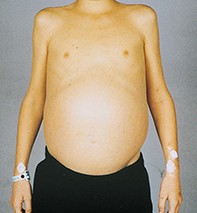Peer Reviewed
Feature Article Paediatrics
A child with jaundice: is this one for the family physician?
Abstract
An important principle in childhood liver disease is that some disorders are curable if diagnosed and treated early but can lead to end-stage liver disease if missed.
Key Points
- The first step is to determine if the jaundice is due to haematological or hepatobiliary disorders, i.e. conjugated or unconjugated hyperbilirubinaemia.
- Childhood liver disease resulting in jaundice can be due to either acute liver injury or an acute exacerbation or decompensation of chronic hepatobiliary disease.
- Some hepatobiliary disorders presenting in childhood are potentially ‘curable’ if diagnosed early.
- Physical or biochemical evidence of liver synthetic failure or encephalopathy is a life-threatening scenario and requires urgent referral to a paediatric tertiary centre.
- Assessment of synthetic function is mandatory. Low serum albumin, or abnormal coagulation not responding to vitamin K, indicates liver synthetic failure.
Purchase the PDF version of this article
Already a subscriber? Login here.

